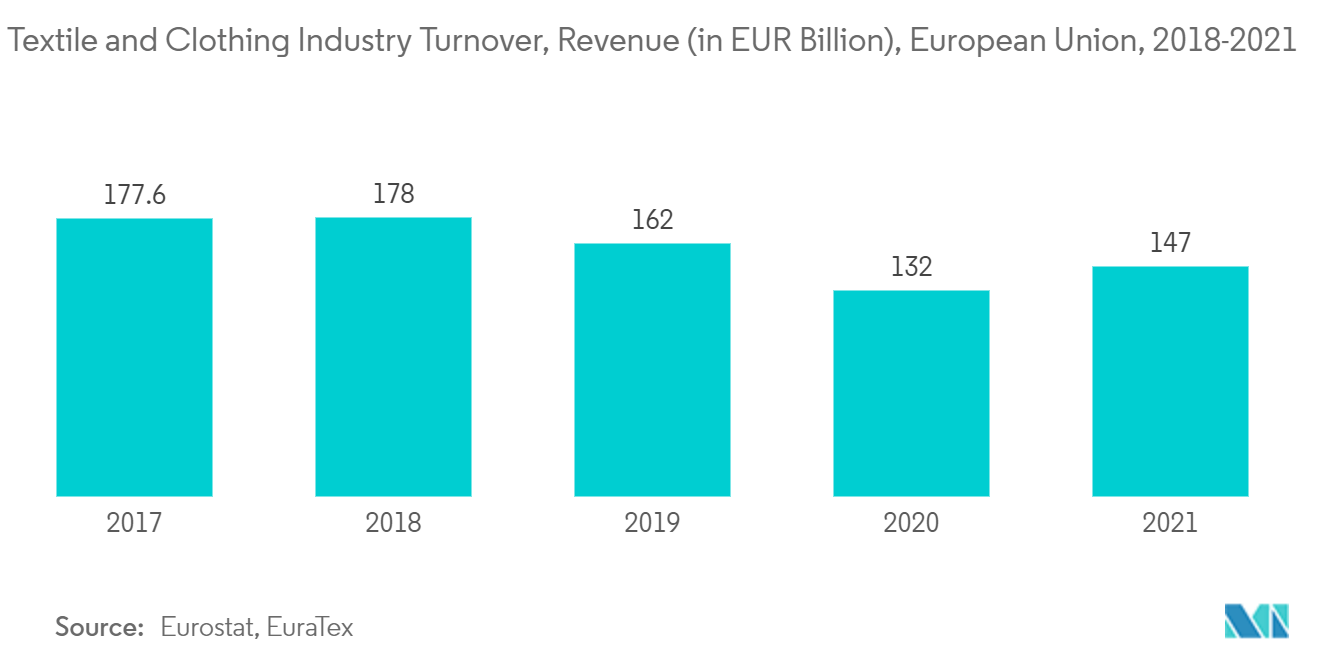Market Trends of Cyclohexane Industry
This section covers the major market trends shaping the Cyclohexane Market according to our research experts:
Rising Demand from the Textile Industry
- Cyclohexane is used for the manufacture of adipic acid, hexamethylenediamine, and caprolactam, which are further used to produce Nylon 6, 6, and 6. The polymerization of caprolactam makes Nylon 6, and the polymerization of adipic acid and hexamethylenediamine makes Nylon 6.
- Some of the most important ways nylon is used are in carpets, furniture, floor coverings, typewriter ribbons, nylon ropes and cordages, fishing nets, strimmer lines, umbrella cloth, sutures, conveyor belts, and other things.
- Nylon 6 is the most common commercial grade of nylon. It is known to be a tough, abrasion-resistant material that possesses high tensile strength. Nylon-6 resins are used in automotive applications, including in-car seat filling and seat covering. Furthermore, nylon filaments can be used to fabricate passenger safety belts in cars, hoses, and others. Multifilament nylon yarns are also used for reinforcing rubbers in tires.
- According to OICA, around 82.68 million vehicles were sold globally in 2021, compared to 78.77 million vehicles that were sold in 2020, reflecting an increasing growth rate of about 5%. Also, nearly 50 million passenger cars were manufactured globally during the first three quarters of 2022, up 9% compared to the same nine-month period in 2021, thus leading to an increase in the consumption of nylon used to produce nylon tire cords, safety belts, seat filling and covering, and others.
- Owing to the low modulus, high strength, and good abrasion resistance, nylon 6 and nylon 6/6 are used to manufacture various lightweight and sheer garments. Some of the apparel that can be fabricated using nylon includes ladies' stockings, socks, sarees, and others. Furthermore, nylon fabric is also consumed by the footwear segment, from the inside fabric to the outside; even the shoe bottom can be made of nylon.
- According to the European Apparel and Textile Confederation (EURATEX), the textile and clothing industry in the 27 countries of the European Union (EU) had a turnover of about EUR 147 billion (USD 165.63 billion) in 2021, which was an increase of about 11% from the year before. This meant that the textile and clothing industry used more nylon filaments and fabrics.
- Because of this, the above factors are likely to have a big effect on the cyclohexane market in the next few years.

Asia-Pacific Region to Dominate the Market
- Due to strong demand from caprolactam, Asia-Pacific is the largest market for cyclohexane, and it is expected to grow at a fast rate over the next few years.
- China is the biggest market for cyclohexane in the Asia-Pacific region. China is likely to be the market-driver in the Asia-Pacific region as the number of caprolactam plants increases and automakers focus on producing lighter cars.
- China remained the global leader in the production of automobiles across the world. According to OICA, around 26.08 million vehicles were produced in China in 2021, compared to 25.22 million vehicles that were produced in 2020, witnessing a growth rate of about 3%.
- Also, according to the OICA, India made about 3.39 million vehicles in 2020 and 4.39 million vehicles in 2021, which is a growth rate of about 30%. This led to an increase in the use of nylon to make tires, seat belts, seat covers, plastic parts made of nylon, and other things.
- Cyclohexane and its derivatives also find application in the construction industry. In 2021, the construction output value in China reached its peak at around CNY 29.3 trillion (USD 4.32 trillion), thus leading to an increase in the consumption of cyclohexane and its derivatives for the production of various construction industry products, including carpet fabrics, ropes, plumbing fittings, and others.
- According to the Ministry of Textiles of India, the textile and apparel industry in India has strengths across the entire value chain, from fiber, yarn, fabric, and apparel. The domestic textile and apparel industry stood at USD 152 bn in 2021, growing at a CAGR of 12% to reach USD 225 bn by 2025.
- Also, the Statistics Bureau of Japan says that the wholesale sales of textiles in Japan were worth about JPY 2.1 trillion (USD 0.016 trillion) in 2021, which was about 2.3% less than the year before. This means that fewer nylon-based textiles are being used in Japan.
- Because of this, the above factors are likely to have a big effect on the cyclohexane market in the next few years.


